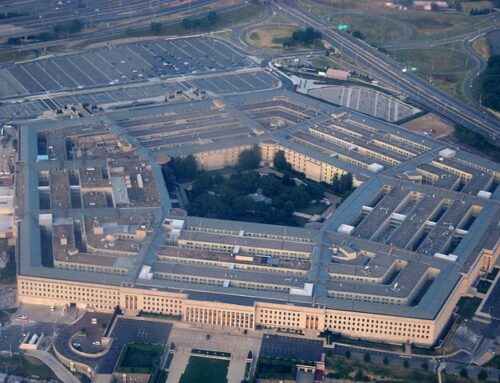On July 11, Pentagon Comptroller David Norquist signed a so-called reprogramming request and sent it to Capitol Hill. You can read an unclassified copy of the full request. In total, the Pentagon asks to shift roughly $3 billion between programs.
As we wrote about this request last week:
“…an agency submits a reprogramming request when it doesn’t want or need to spend its appropriated funds the way Congress directed. The reasons for these requests are myriad. Sometimes the need to spend the money has disappeared before all the money was obligated or the need to spend on a particular program never materializes and all the appropriated funds are now available for another use. Could be that priorities have shifted or the administration simply doesn’t want to spend the money the way the Congress has intended.”
At the same time we pointed out the unusually high number of “new starts” in this request. A new start is a program that has not previously been funded. These programs are noteworthy because starting a new program via shifting money away from a congressionally-approved program short circuits the congressional oversight process.
In the interest of transparency, and to call attention to the fact that some of the new starts are big ticket items, we pulled out all of these programs and are listing them below.
In particular we point out that of the $3 billion reprogramming, the funding for new starts totals $519.1 million or 17.5 percent. Of that total, $480.7 is for just eight programs.
We certainly hope Congress isn’t foregoing its oversight role in establishing such major programs.
ARMY
- Integration and synchronization of Additive Manufacturing capabilities. $12.2 million
- Procure 3,609 Army’s Enhanced Night Vision Goggle – Binocular (ENVG-B). $104.6 million
- Very Small Aperture Terminal (VSAT) upgrade efforts to improve logistics satellite reach-back access on the DoD network and critical unit capabilities. $93.0 million
- Deep Strike Cannon Artillery System within the Long Range Precision Fires (LRPF) Cross-Functional Team’s charter. $46.0 million
- Adaptive Soldier Architecture effort intended to accelerate increased fidelity of squad and soldier baseline modeling and simulation. $5.0 million
- Solicitation of proposals and competitive source selection for Next Generation Combat Vehicle that includes sample testing of vendor-proposed articles in preparation of the program entry into Engineering and Manufacturing Development phase. $37.6 million
- Accelerate by two years the type classification and completion of the development and testing of the Tandem Warhead for use in the Shoulder Launched AT-4 Single-use 84mm Anti-Tank weapon. $3.0 million
- Accelerate the XM1113 Next Generation Rocket Assisted Projectile by two years. $5.1 million
AIR FORCE
- End-to-End Modeling Phase IV (ETEM IV) transition. $200 thousand
- Procure 1,000 very low collateral damage bombs. $41.1 million
- Support the Instrument Landing Systems (ILS) on Osan Airbase runway 09R/27L. $2.9 million
- Procure commercial-off-the-shelf (COTS) terminals and antennas for the Phoenix Air-to-Ground Communications Network (PAGCN) system. $5.0 million
- Modify the Military Global Positioning System (GPS) capability for two Battlefield Airborne Communication Node (BACN) equipped E-11A aircraft. $23.4 million
- Develop and integrate a Military Global Positioning System (GPS) capability on the Battlefield Airborne Communication Node equipped E-11A aircraft $6.1 million
- Procure a Theater Operationally Resilient Command and Control (TORCC) system to align Pacific Air Forces (PACAF) command and control (C2) with Air Force Multi Domain Command and Control efforts. $7.0 million
DEFENSE-WIDE
- Establishment of the Joint Artificial Intelligence Center. $70.0 million
- Accelerated demonstration of a land-launched hypersonics capability. $65.0 million
- Expanded implementation of the Risk Rating Tool (RRT) as part of the DoD’s Background Investigation mission. $1.9 million











Get Social